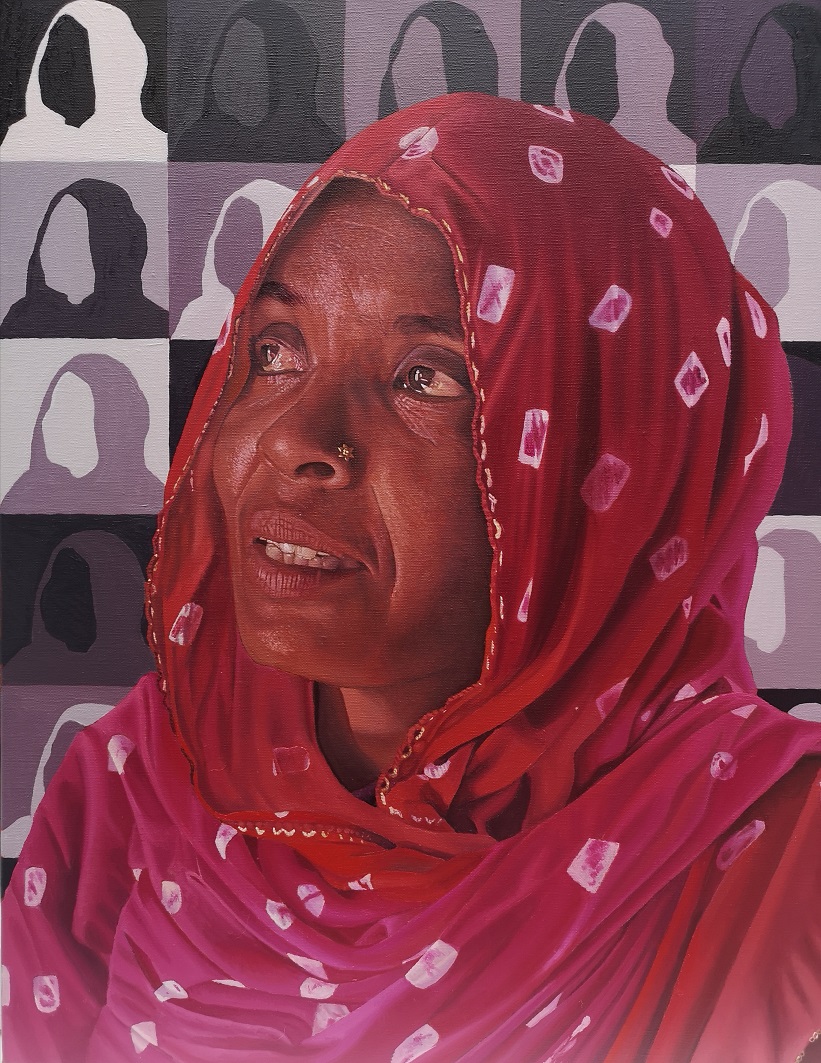James Earley Painting Exhibition
– The Bangladesh Series –

Rahima
It was May 8th 2022, my first day visiting the islands in Northern Bangladesh. We departed early from Balishi village travelling up the Brahmaputra river to the island of Aorai Bari. The Brahmaputra river was vast with hundreds of small islands scattered along the river. The beauty was breathtaking yet also a mask as this river was the source of so much fear of the residents of these tiny islands or chars as they are called. Climate change has seen water levels rise and the flooding was now more and more frequent to such an extent that many people had been forced to evacuate the homes several times in the last year alone.
As myself and my guides entered the island of Aorai Bari I was struck by its beauty and as we met the inhabitants of the island the first emotions that I could sense and feel from the villagers was joy, hope and resilience in a pure form with constant sounds of laughter. It was strange to see such happiness knowing the suffering that the people had to endure in more frequent measures as our climate changes. One of my first interviews was with Bayezid a young student who told me of the harrowing story of how his best friend Belal had been swept away by a recent flood but thankfully Belal was saved. I learnt that many people had died through drowning as the floods had come with such speed.
The remoteness of these islands and the long journey that it took to get to them demonstatred how difficult it is for help and assistance to get to these isolated and remote islands and it was testament to the perseverance and determination of Friendship that they had not only embarked on such a difficult task but had now formed a partnership with the local community which was thriving and purposeful.
These islands were so small, the land was really just sand and so was devastated by flooding but also unsuitable to build structures like hospitals so before Friendship came along the villagers had no real access to health care so Friendship had embarked on a scheme to remedy this situation and allow the villagers to receive health care. Friendship integrated a three-tier health care system, designed to ensure that healthcare is available to all in Friendships area of operation. Tier 1 includes the floating hospitals that provide vital care including surgery for common conditions such as cataracts and burns, child healthcare, maternal health care and referrals to specialist facilities. Tier 2 comprises of Satellite clinics. The satellite clinic teams regularly visit isolated communities, spreading awareness of available health services and providing access to essential healthcare in communities far from hospitals. Tier 3 comprises of Community medic-aides and skilled birth attendants. Women trained by Friendship from within its working communities deliver primary healthcare services daily to their patients doorsteps.
I was introduced to Rahima Begum who was a community medic aid. I was struck by her pride in her role and she told me that she was responsible for looking after 122 families which amounted to 486 people. She was always busy but she had a real passion in wanting to help her community and it was this passion that I wanted to show in my portrait of Rahima. Rahima was inspirational and a person that I would never forget.
